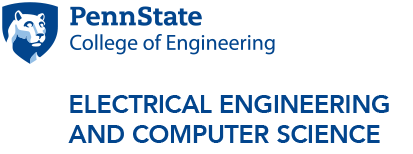More than $8M awarded to advance engineered metamaterial research
5/15/2017
UNIVERSITY PARK, Pa. — Douglas Werner, the John L. and Genevieve H. McCain Chair Professor of Electrical Engineering at Penn State, has been awarded more than $8 million to continue his pioneering work in metamaterials development. The awards come from the Defense Advanced Research Projects Agency (DARPA), the United States Navy and Lockheed Martin.
Werner, the director of the Computational Electromagnetics and Antennas Research Lab (CEARL) at Penn State, has been at the forefront of the design and application of metamaterials — synthetic, composite materials that are engineered to possess unique qualities not available in natural materials — to use in radio frequencies through the optical regime. For example, this research has allowed his team to engineer a device that exhibits chameleon-like behavior in the infrared and to demonstrated the first practical application for electromagnetic cloaking technology that eliminates strong interference and coupling between multiple antennas when they are placed in close proximity.
DARPA has awarded $5.085 million to a project headed by Werner that focuses on advancing the state-of-the-art in multi-scale and multi-physics modeling techniques along with developing powerful optimization tools for the inverse design of engineered optical materials (e.g., metamaterials).
“It is expected that the new algorithms and associated simulation tools developed under this program will lead to unprecedented computational efficiency gains that are expected to revolutionize optical engineered material systems,” said Werner.
Penn State will be the lead institution on this project with collaboration between researchers from Purdue University, Rensselaer Polytechnic Institute and the State College-based company ExH, Inc.
The U.S. Navy is giving Werner $2.53 million to continue to research and develop high-power microwave metamaterial-enabled antenna systems for high power microwave applications, after awarding him $2.11 million in 2014 to begin this work. The megawatt-class antennas utilize state-of-the-art metamaterials, developed and tested by the CEARL, with unrivaled power handling to enable fast, high-reliability beam steering.
Further funding for Werner’s research comes from Lockheed Martin. The company is contributing $400K to help fund two projects that involve the research and development of several cutting-edge metamaterial-enabled antennas.
“One project aims to improve coverage and availability for global positioning and communications by leveraging metamaterial properties to enhance the efficiency and reduce the size, weight and cost of spaceborne satellite antenna systems,” said Werner. “The other involves the design and optimization of a multilayer metaferrite materials to improve performance and SWaP (Size, Weight and Power) of low frequency antenna systems.”




